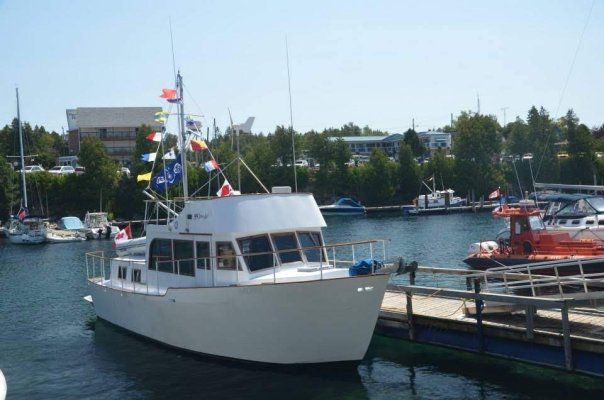Sunset
Senior Member
- Joined
- May 12, 2013
- Messages
- 278
- Location
- Canada
- Vessel Name
- Manatee
- Vessel Make
- 1976 Albin 25 DeLuxe
I am yearning to retire and move up to a "proper" size trawler from my lovely Albin25 and put my feet up for weeks at a time. Now looking earnestly at a 37 ft DC fly-bridge trawler with a steel hull and deck. 80's era, custom made (factory) not a lot of bells and whistles but beautifully maintained wood etc. The small 4 cyl Ford engine, stabilizer fins (bilge style). Price very reasonable. A barn boat.
After all the rocking and rolling the Albin has to offer I have to think the weight and keels of this beauty must keep it relatively steady in a beam sea. It would also diminish the fear of bumping into hard things . . . which I have been known to do if rarely.
But most steel vessels seem to be much larger. What might be the problems associated with a steel trawler of this size? Or is it all roses?
After all the rocking and rolling the Albin has to offer I have to think the weight and keels of this beauty must keep it relatively steady in a beam sea. It would also diminish the fear of bumping into hard things . . . which I have been known to do if rarely.
But most steel vessels seem to be much larger. What might be the problems associated with a steel trawler of this size? Or is it all roses?



